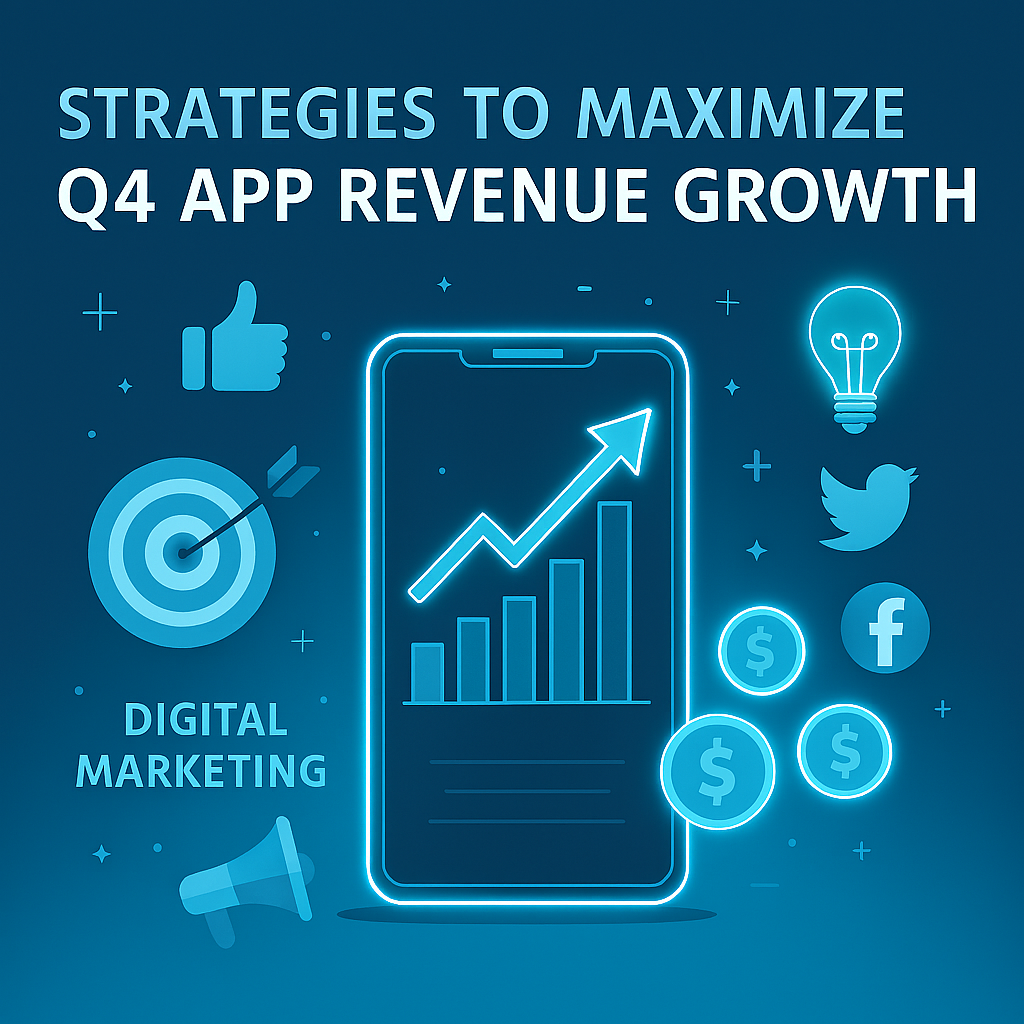CPI for mobile games is an essential metric as it helps developers and marketers assess the effectiveness of their user acquisition strategies. As mobile gaming continues to grow rapidly, with over 4.41 billion downloads in January 2025 and paid app installs expected to reach $94.9 billion by the end of the year, understanding CPI for mobile games becomes even more important in 2025. By optimizing CPI, developers can make informed decisions about their advertising investments and reach the right audience efficiently.
In this article, we will explore the key factors influencing CPI for mobile games, its benefits, 2024 trends, and strategies to improve CPI performance, helping developers optimize their marketing efforts.
- CPI for Mobile Games
- Factors that affect Mobile Games CPI
- Mobile Games CPI
- Benefits of CPI for Mobile Games
- How to Improve Mobile Games CPI performance
- Conclusion
Mobile games CPI is a key metric for evaluating the effectiveness of user acquisition strategies. CPI (Cost Per Install) indicates how much is spent on average, on each new install generated by an advertising campaign.
It is calculated by dividing the total advertising investment by the number of paid downloads obtained in a given period. For developers and marketers, CPI for mobile games is a crucial tool as it highlights how efficiently advertising investments attract new users.
In a highly competitive market, where visibility and user base expansion are essential, monitoring CPI for mobile games enables the optimization of resources used to acquire new players.
There are several key factors that influence CPI for mobile games:
- Operating system: apps on Android and iOS tend to generate different CPI rates due to user spending behavior. iOS users, particularly in high-GDP regions like North America, Japan, and Europe, are more likely to spend on in-app purchases (IAPs), leading to a higher CPI for mobile games. In contrast, Android has a stronger presence in areas such as Latin America, India, and Southeast Asia, where users typically have lower purchasing power, resulting in a lower CPI.
- App category and genre: the category and genre of an app also play a critical role in determining CPI. Mobile games, for example, usually have a higher acquisition cost compared to other app types, with certain gaming genres demanding even above-average CPIs (we will explore it in detail in the next paragraph). This variation is influenced by factors like market trends, seasonality, and competition.
- Geographical location: the socio-economic conditions of a country also impact the cost of acquiring new users, as advertisers expect users in wealthier nations to spend more. As a result, developed markets such as the United States, Canada, and Western Europe tend to have a higher CPI. This is mainly because users in these regions are more accustomed to buying digital content, increasing competition among developers who invest in advertising to capture their attention. Since cultural preferences, gaming habits, and app store dynamics differ by country, marketers must implement tailored user acquisition strategies to optimize CPI for mobile games and improve return on investment in each market.
CPI for mobile games is a key metric in the mobile gaming industry, especially for its scalability. With mobile game downloads reaching 49.6 billion in 2024, the cost of acquiring new users varies significantly depending on the game genre and its target audience.
Different types of games have distinct acquisition costs due to factors such as user engagement, monetization strategies, and market competition. Depending on the monetization strategies, whether in-app purchases (IAP) or in-app ads (IAA), the timeframe for evaluating ROI or ROAS can also vary, ranging from Day 0 to Day 7, Day 30, and so on. Additionally, an increasing number of games now combine both monetization models, leveraging a mixed approach that includes both in-app purchases and in-app ads in order to maximize revenue potential.
Let’s take a look at the CPI for mobile games in 2024 by categories and operating system since it is very likely that these trends will remain the same in 2025, with CPI depending on game genre and operating system.
- Hyper-casual games: these games are designed with simple gameplay and broad accessibility, leading to lower CPI for mobile games. They mainly rely on ads for monetization rather than in-app purchases. 2024 CPI: iOS $2.5, Android $1.5.
- Strategy games: focused on more engaged players willing to spend on in-app purchases, strategy games have higher CPIs. The niche audience and intense competition further increase user acquisition costs. 2024 CPI: iOS $5.5, Android $4.
- Sports and racing games: CPI in these categories depends not only on the genre itself but also on factors like graphics quality and gameplay realism. More realistic games tend to have higher acquisition costs. 2024 CPI: iOS $3.5, Android $2.5.
- Mid-core games: these games balance accessibility and complexity, leading to moderate CPI rates. 2024 CPI: iOS $4.5, Android $3.25.
- Hardcore games: with a focus on highly dedicated players, hardcore games require significant investment in user acquisition, resulting in some of the highest CPI. 2024 CPI: iOS $6, Android $4.5.
- Puzzle games: this genre attracts a large user base, keeping CPI relatively affordable. 2024 CPI: iOS $3, Android $2.
- Action games: often featuring fast gameplay, action games appeal to both casual and competitive players, leading to moderate CPIs. 2024 CPI: iOS $4.5, Android $3.
- RPG games: like strategy games, RPGs cater to a committed player base that invests in in-app purchases, pushing CPI higher. 2024 CPI: iOS $6, Android $4.5.
- Simulation games: games that recreate real-world scenarios attract a diverse audience, requiring a moderate CPI. 2024 CPI: iOS $3.75, Android $2.5.
- Arcade games: generally designed for quick and engaging gameplay, arcade games maintain lower CPIs. 2024 CPI: iOS $3, Android $2.

In the mobile gaming industry, CPI for mobile games is essential for developers and marketers aiming to expand their user base while optimizing advertising budgets. A lower CPI for mobile games indicates a more efficient user acquisition strategy.
Given the highly competitive nature of the mobile gaming market, capturing users’ attention through well-planned advertising efforts can significantly influence a game’s success. Additionally, keeping track of CPI for mobile games trends helps identify the most effective promotional channels and refine targeting strategies, allowing developers to maximize their impact.
CPI for mobile games campaigns offer a strategic advantage by focusing on attracting users who are genuinely interested in a specific game. Unlike other types of advertising, these campaigns are designed to reach players who are more likely to engage with the game long-term, leading to improved retention rates and increased player lifetime value (LTV). Marketers can also fine-tune their campaigns to target specific audiences, such as individuals who frequently engage with similar games or belong to a particular gaming niche.
Another major benefit of CPI is its cost-effectiveness compared to other pricing models. Since developers only pay when a user installs the game, they avoid unnecessary expenses related to ad impressions or clicks that do not lead to downloads. This model presents a lower financial risk for advertisers, making it an appealing choice for mobile game promotion.
As mobile gaming continues to dominate the app industry, fueled by increasing global investment, it has become one of the most profitable sectors in digital entertainment. With a wide range of gaming genres available, developers and marketers have the opportunity to reach a diverse audience, ensuring long-term growth and profitability.
Lastly, benefits of CPI also include the possibility to compare it with other key performance indicators such as ARPU, LTV, and ROAS, providing a comprehensive view of user acquisition performance and allowing a more accurate assessment of efficiency. For instance, high CPIs resulting in unsatisfactory ROI may indicate an inefficient user acquisition campaign, highlighting the need to optimize targeting, ad creatives, or monetization strategies.
Optimizing CPI for mobile games goes beyond simply reducing acquisition costs, since it also involves attracting high-quality users who will actively engage with the app and contribute to its long-term success. In order to optimize their marketing budgets and improve CPI for mobile games, game developers and marketers can implement several key strategies:
- A/B Testing: continuously comparing different ad creatives helps determine which elements resonate best with the target audience. By analyzing performance metrics, marketers can identify the most effective creatives and refine their campaigns accordingly. Since user preferences evolve over time, A/B testing should be an ongoing process to maximize engagement and minimize CPI for mobile games.
- Targeting strategies: a personalized approach to advertising can significantly enhance CPI for mobile games performance. Audience segmentation based on demographics, geographic location, and user behavior allows marketers to deliver tailored content that aligns with users’ interests.
- Ad Creatives: visual appeal and compelling calls-to-action play a crucial role in attracting users. Continuously testing and refining ad creatives ensures higher engagement and conversion rates, leading to better-quality installs and a more favorable CPI for mobile games.
- Shift from CPI to CPA: a CPI campaign can be particularly effective for attracting new users and rapidly scaling volumes. However, in order to maximize ROAS, the strategy can shift to CPA, selecting paid events such as reaching a specific level or making an in-app purchase to ensure a more sustainable return on investment.
- User Experience and Engagement: a seamless and enjoyable user experience is essential for retention and monetization. Optimizing onboarding, improving user interface design, and refining gameplay mechanics can significantly impact user satisfaction, reducing churn rates and increasing the lifetime value of each user, ultimately improving CPI for mobile games.
- Adapting strategies: the mobile gaming industry is constantly evolving and requires marketers to adapt their strategies to the latest trends. Continuously analyzing market feedback and performance data enables optimization of user acquisition strategies, ensuring sustained CPI efficiency and maintaining a competitive advantage.
In conclusion, CPI for mobile games is a critical metric for game developers and marketers seeking to optimize their user acquisition strategies in 2025. By understanding and effectively managing CPI for mobile games, developers can attract high-quality users, maximize their marketing budgets, and improve return on investment (ROI). As the mobile gaming industry continues to evolve, considering the factors that affect CPI and adapting strategies to improve performance will be crucial to maintaining a competitive advantage.




















